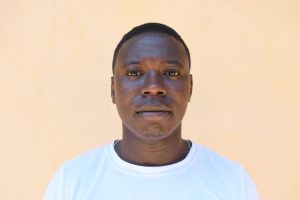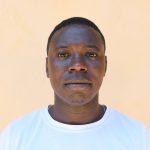Water at St. Catherine Lema Girls Secondary School is rationed. Twice a week, the students line up in the presence of their teachers to receive their 10-liter share. But once the teachers leave, the bullies of the student class steal other students' portions, leaving the unlucky ones unable to clean their dishes, launder their clothes, brush their teeth properly, bathe, wash their hands after using the latrine, or even drink.
"Here in school, there isn't enough water for drinking and washing," said 16-year-old Purity. "In class, I can be thirsty, but since the water points are dry, I cannot get water to drink. One can go for a day without drinking water."
With such a high population at this boarding school—852 students and 54 staff—it's no wonder that the school's small rain tanks run dry once the region's short rainy season ends. And when this happens, the school's principal, Patricia Mule, is forced to spend the school's limited budget purchasing water. But because the school doesn't have enough money to spare for such a purpose, they can't buy enough to serve everyone.
"The current water situation at my school gives me sleepless nights," Mrs. Mule said. "I am always worried about the unrest of students, which is caused by water shortage in the school. Poor sanitation is also a challenge, as we have many students and very little water to serve them for proper cleanliness to be achieved."
With so many consequences of water scarcity, it's easy to see why Principal Mule has trouble sleeping. The school is performing poorly in both national examinations and inspections, and they have been unable to implement the required COVID-19 prevention protocols by the Kenyan government.
For their examinations, the school's agricultural students must display thriving crops, but the school doesn't have the water to spare for the students' gardens, leading to poor scores and fractured student morale. A dehydrated girl who feels unclean because someone stole her fair share of water, and who scores poorly on her exams due to circumstances out of her control, will not show up to class eager to learn.
With the large size and high capacity of the planned rain tank, students will no longer have to worry about their hygiene or their hydration day after day.
Rain Tank
We will build a 104,000-liter rain tank for this school, making the others look tiny in comparison. Because of how rarely it rains in Southeastern Kenya, this tank's large volume is designed to store as much water as possible during the seasonal rains, making more water available through the dry months. This water will benefit the students, teachers, and supplementary staff.
Parents will mobilize the materials needed for construction, including sand, stones, and water. They will also lend their strength and time to help with the construction. We will complement their materials with a skilled artisan to lead the project in addition to providing the tools, lumber, metal, cement, and gutter system.
As soon as the tank has time to cure, it can begin collecting rainwater for the school's use.
Training
We will train students and staff on sanitation, hygiene, and other topics for 1 day. Those in attendance will form a school health club that will promote good hygiene and sanitation practices both at school and at home. They will learn all of the steps to proper handwashing, how to treat water, and how to keep their environment clean. The school will also be taught how to best oversee and maintain their new rain tank and handwashing stations.
Handwashing Stations
A total of 3 handwashing stations will be installed upon the project’s completion and before training. These are 1,000-liter plastic tanks fitted with 3 taps each, allowing 9 students to wash their hands at once. The student health club and school management will be responsible for making sure the tanks are filled with water and that a cleaning agent such as soap or ash is always available.

 Rainwater Catchment
Rainwater Catchment
 Rehabilitation Project
Rehabilitation Project


































